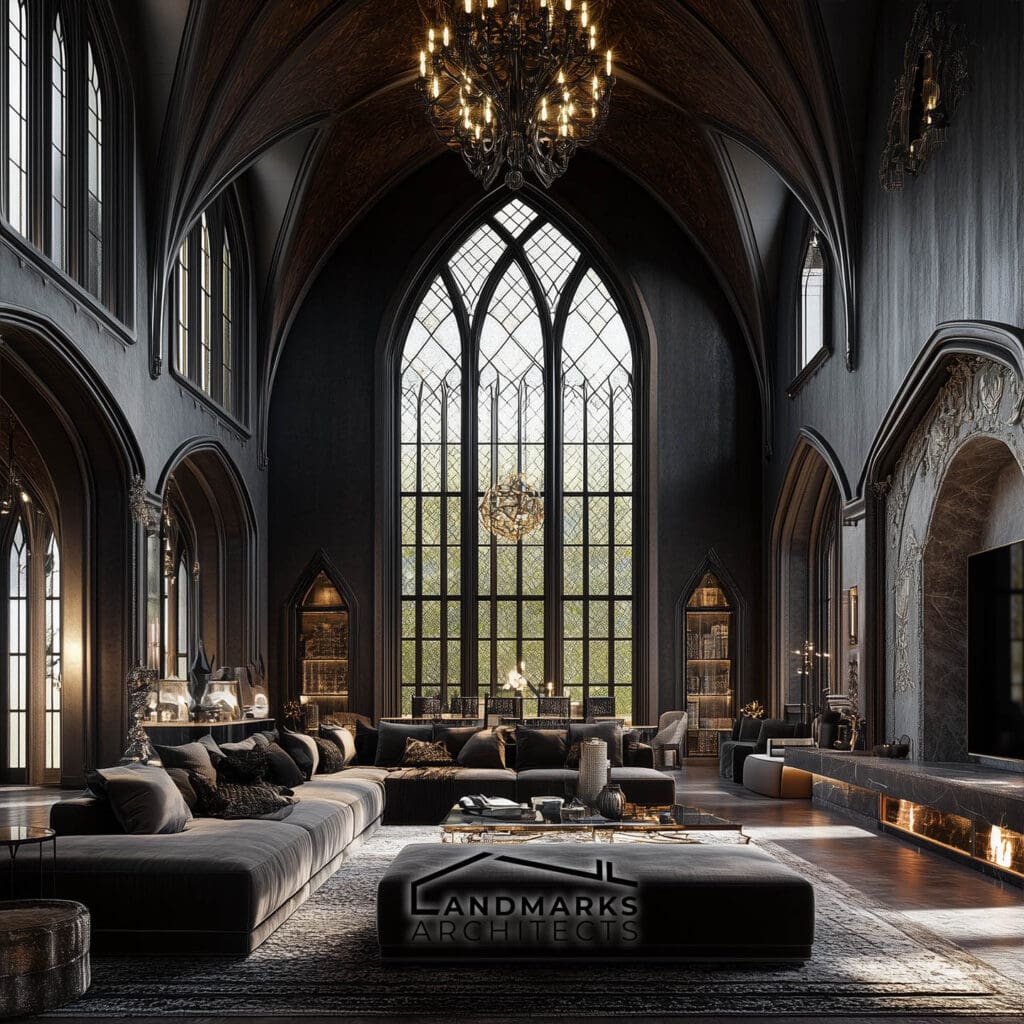
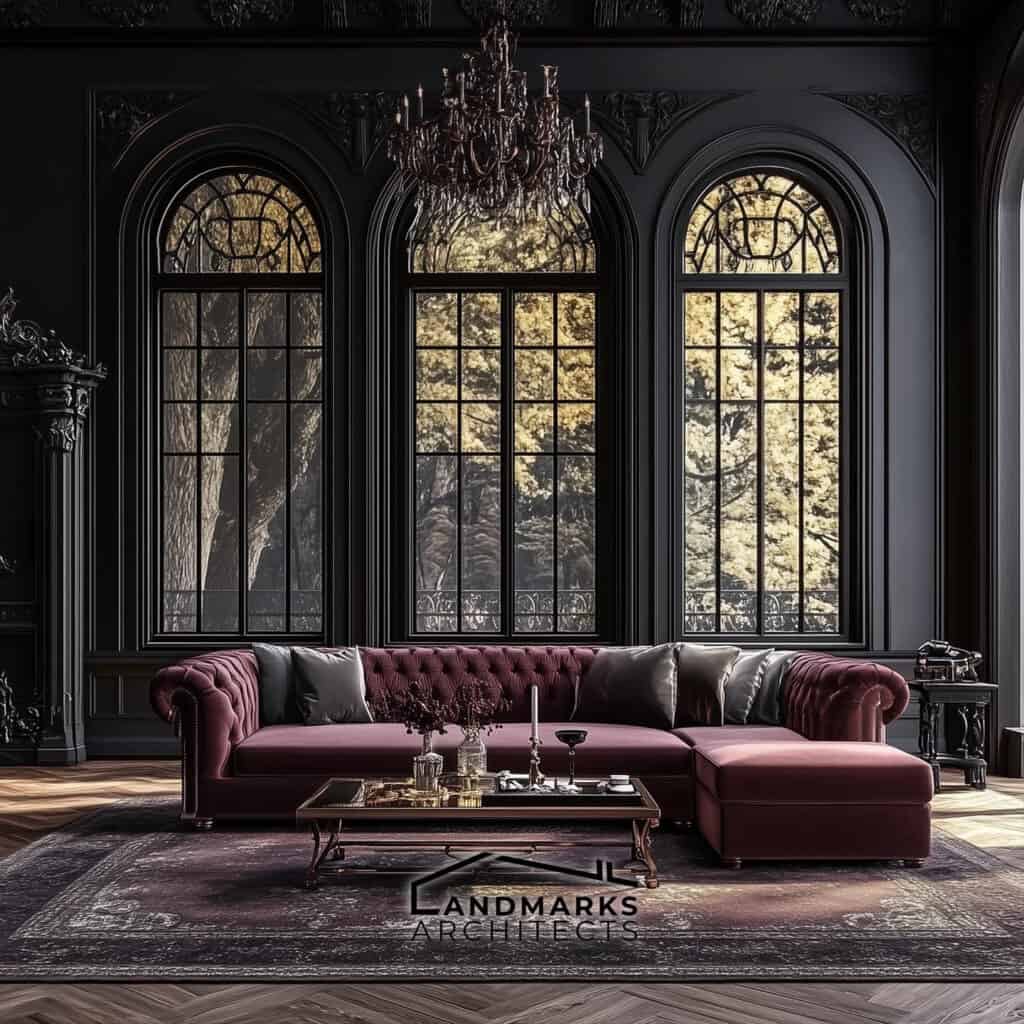
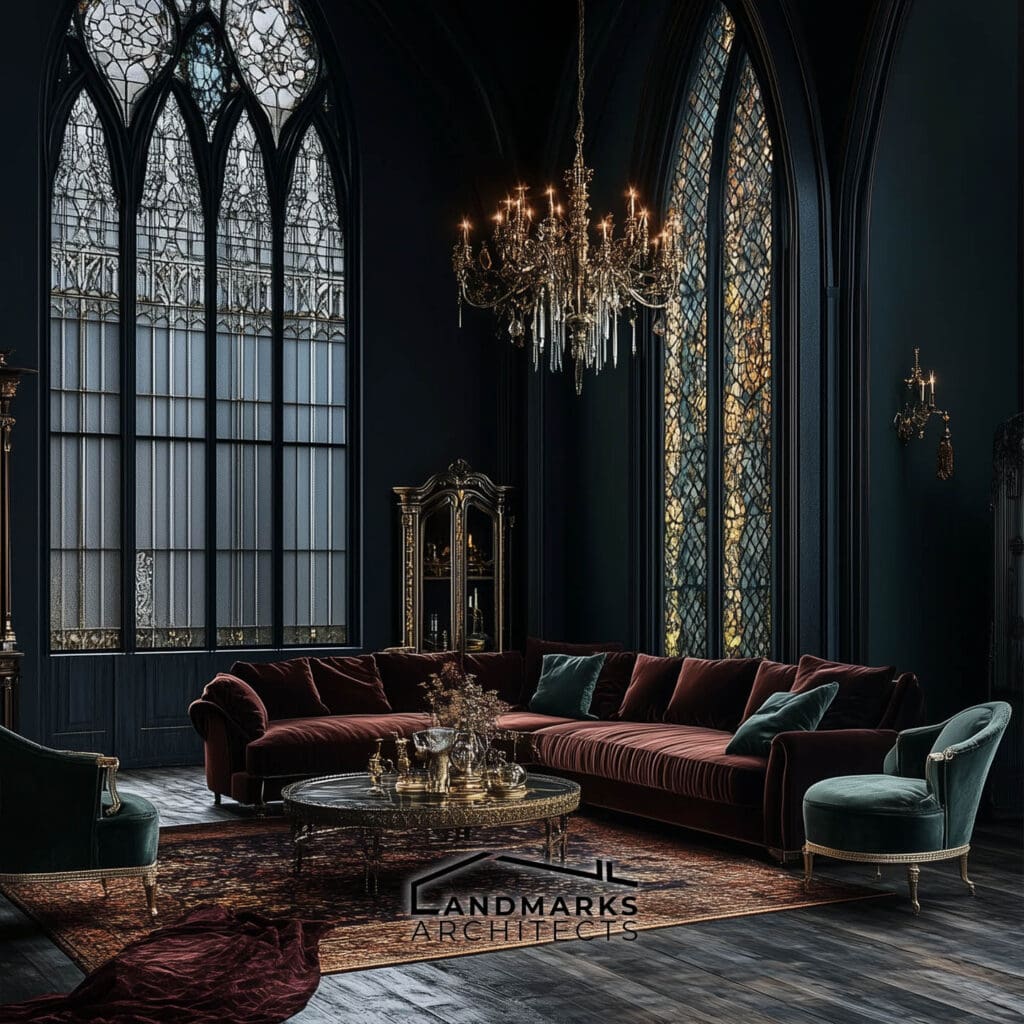
Ever wondered how to bring a touch of timeless elegance into your modern space? Gothic interior design blends dramatic, classic elements with contemporary style to create a striking and sophisticated look.
You don’t have to navigate this alone. You can transform your space into something unique and captivating with the right guidance.
At Landmarks Architects, We’re here to help you achieve a space that’s both elegant and inviting.
In this article, we’ll cover:
- Key Gothic architectural features
- Color schemes and furniture
- Fabrics and stained glass
- Wrought iron accents and art
- Flooring and rugs
Ready to enhance your space with Gothic charm? Keep reading to discover how to achieve a stylish, timeless look. By following our tips, you’ll create a stunning environment that combines historical depth with modern sophistication.
1. Gothic Architectural Features
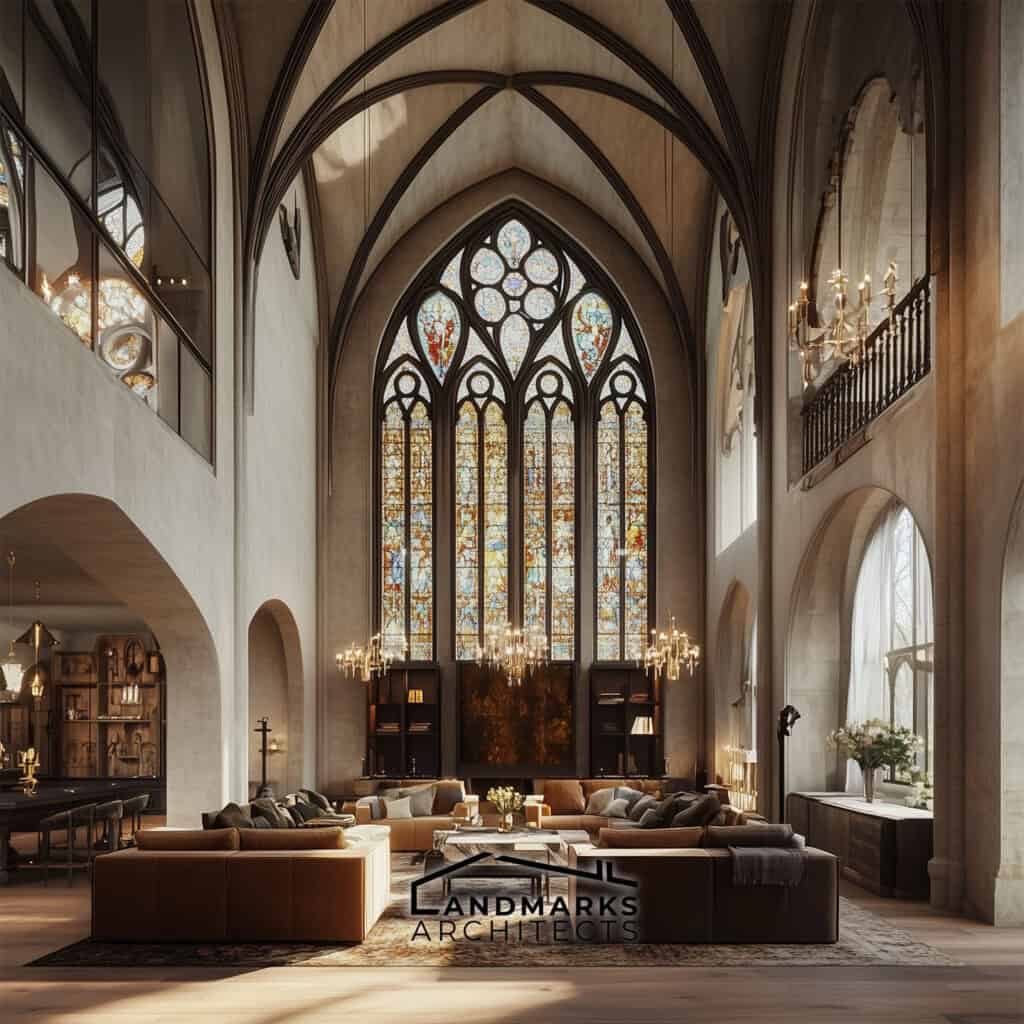
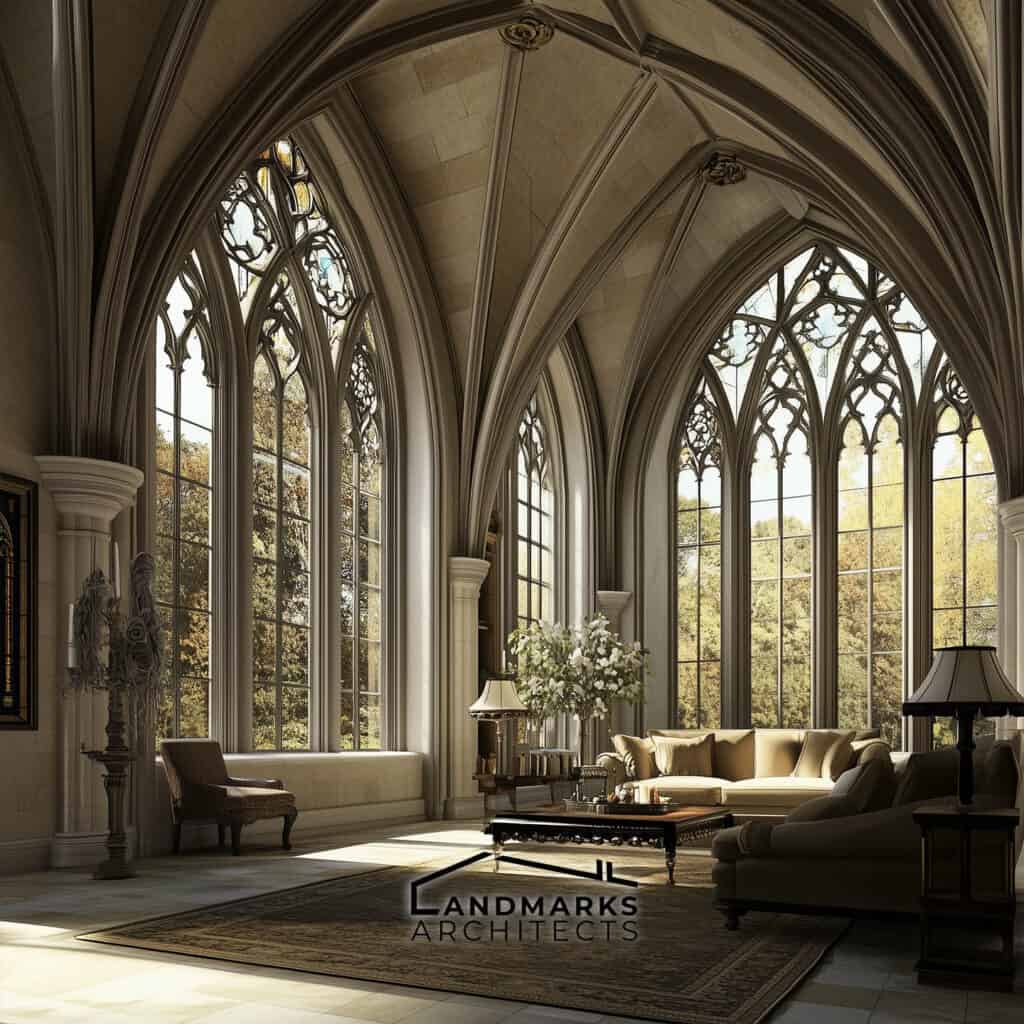
Gothic architecture is known for its dramatic and unique features, creating a striking and memorable look. This style is one of the types of architectural styles that stands out for its distinctive elements.
Key elements include:
- Pointed Arches: These arches are a key part of the Gothic style. They are strong and elegant, adding height and drama to the space.
- Ribbed Vaults and Vaulted Ceilings: These features are important in Gothic interiors. They allow for higher ceilings and make the space feel larger and more open.
- Intricate Stone Carvings: Gothic buildings often have detailed carvings on their stone walls. These carvings are a big part of the Gothic style and show skilled craftsmanship.
- Stained Glass Windows: These windows are a famous feature of Gothic architecture. They let colorful light into the space, creating a beautiful and dramatic effect.
In the modern Gothic style, traditional Gothic elements are combined with contemporary touches. Dark wood furniture and accents add warmth and depth, updating the Gothic design.
This blend of classic and modern features creates a unique and captivating atmosphere, reflecting the influence of modern architectural styles.
2. Gothic Color Schemes

Gothic color schemes use dark and rich colors to create a dramatic and moody feel. Here are some common colors and combinations for Gothic interior design and Modern Gothic style:
- Common Colors:
- Deep Green: Feels lush and mysterious.
- Midnight Blue: Gives a calm but deep look.
- Deep Purple: Adds a rich, royal touch.
- Rich Black: Creates a bold, dramatic effect.
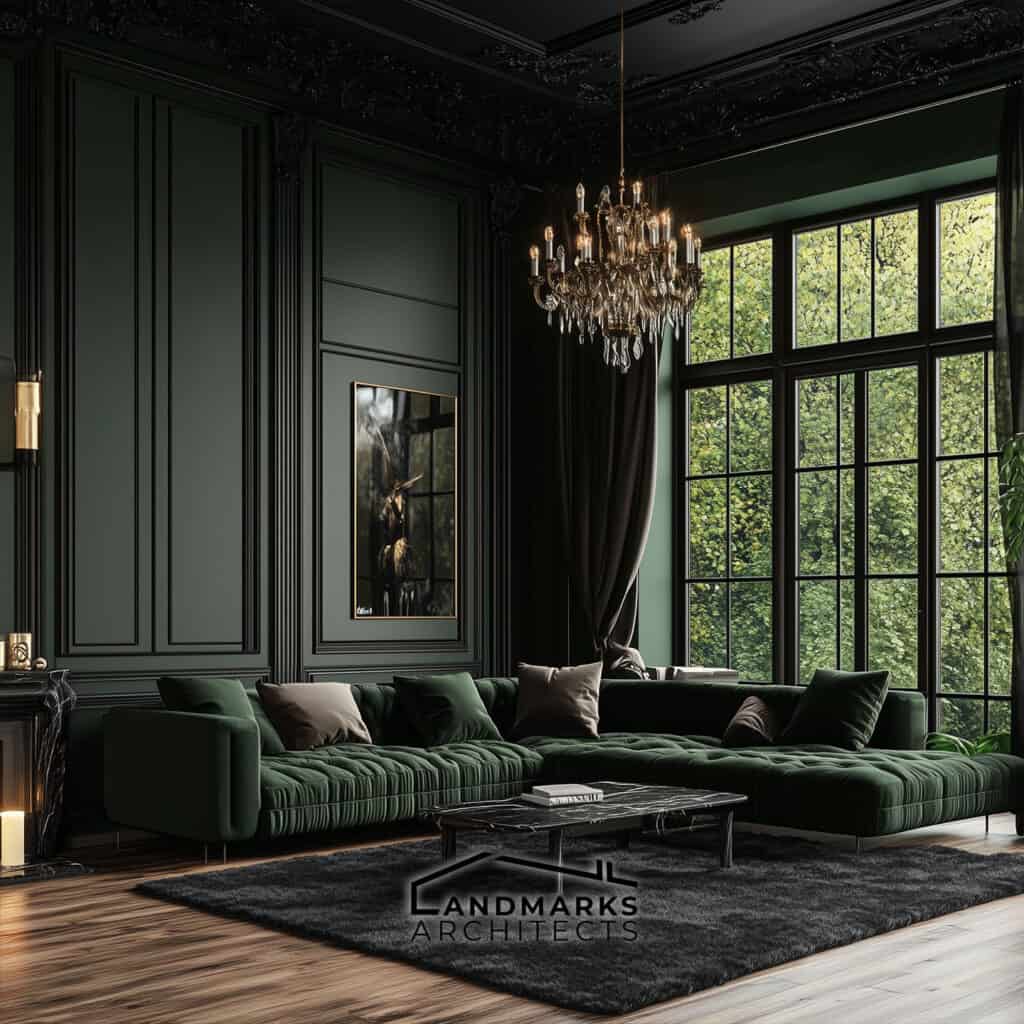
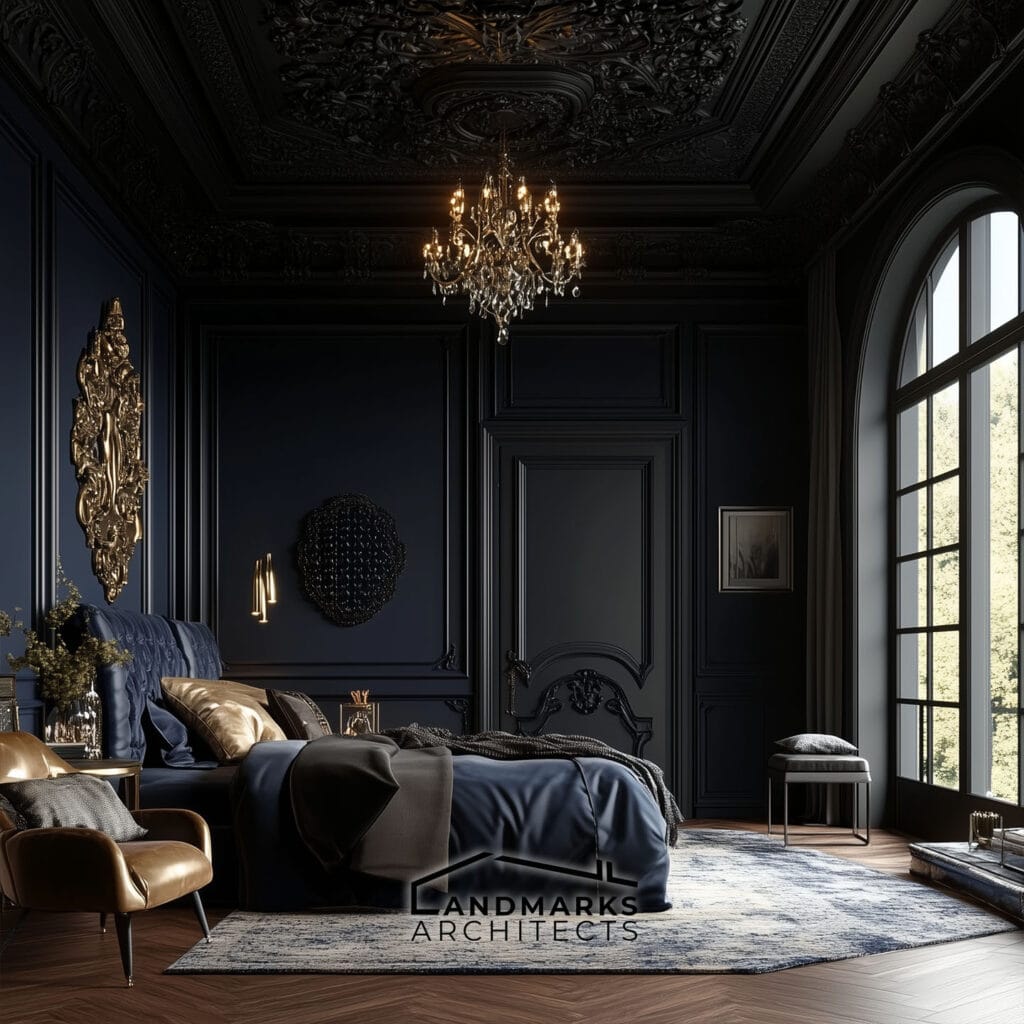
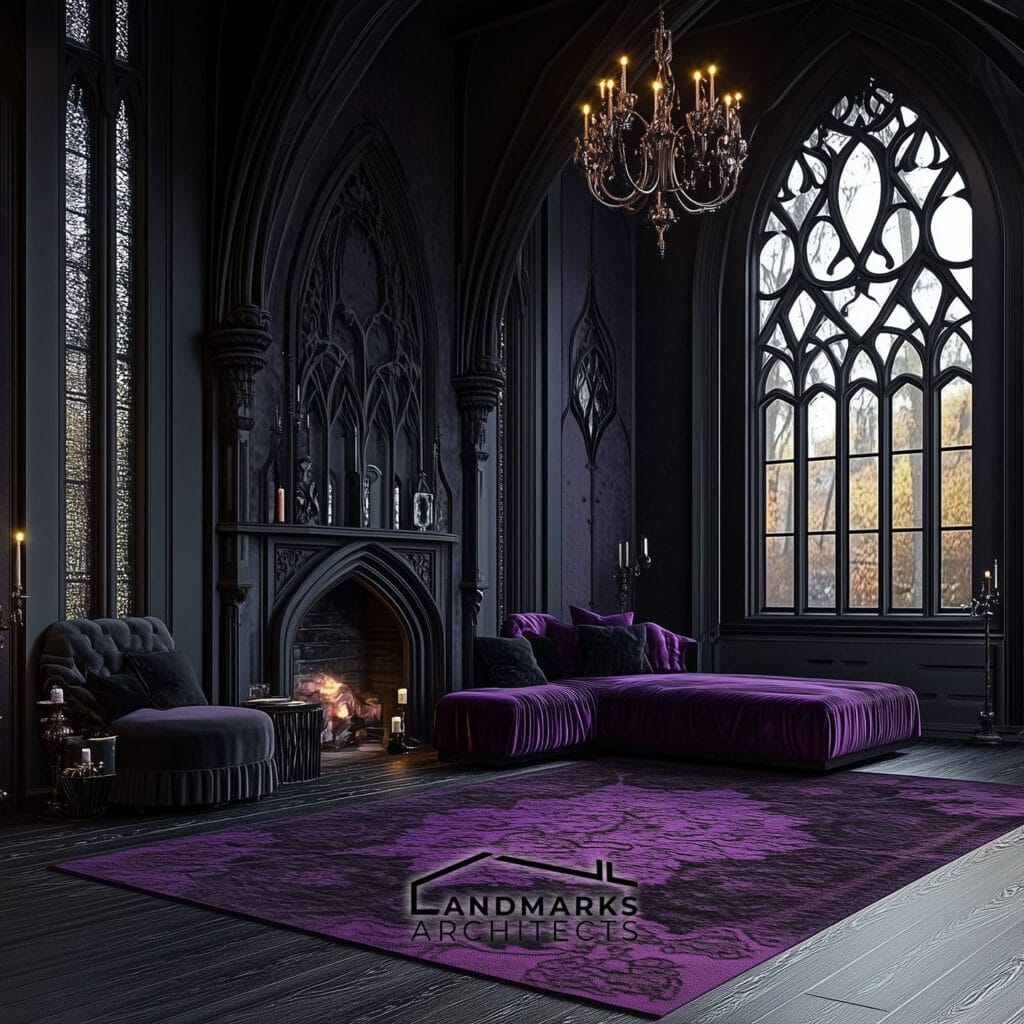
- Suggested Color Combinations:
- Deep Green with Black Walls: This makes the space feel deep and immersive.
- Midnight Blue with Gold Accents: Provides a striking and luxurious contrast.
- Dark Purple with Burgundy: Creates a warm and captivating look.
These colors and combinations fit the Gothic aesthetic and work well for both traditional Gothic and Modern Gothic styles. Choosing the right colors helps define the Gothic interior design and makes the space feel both cozy and intriguing.
3. Gothic Furniture
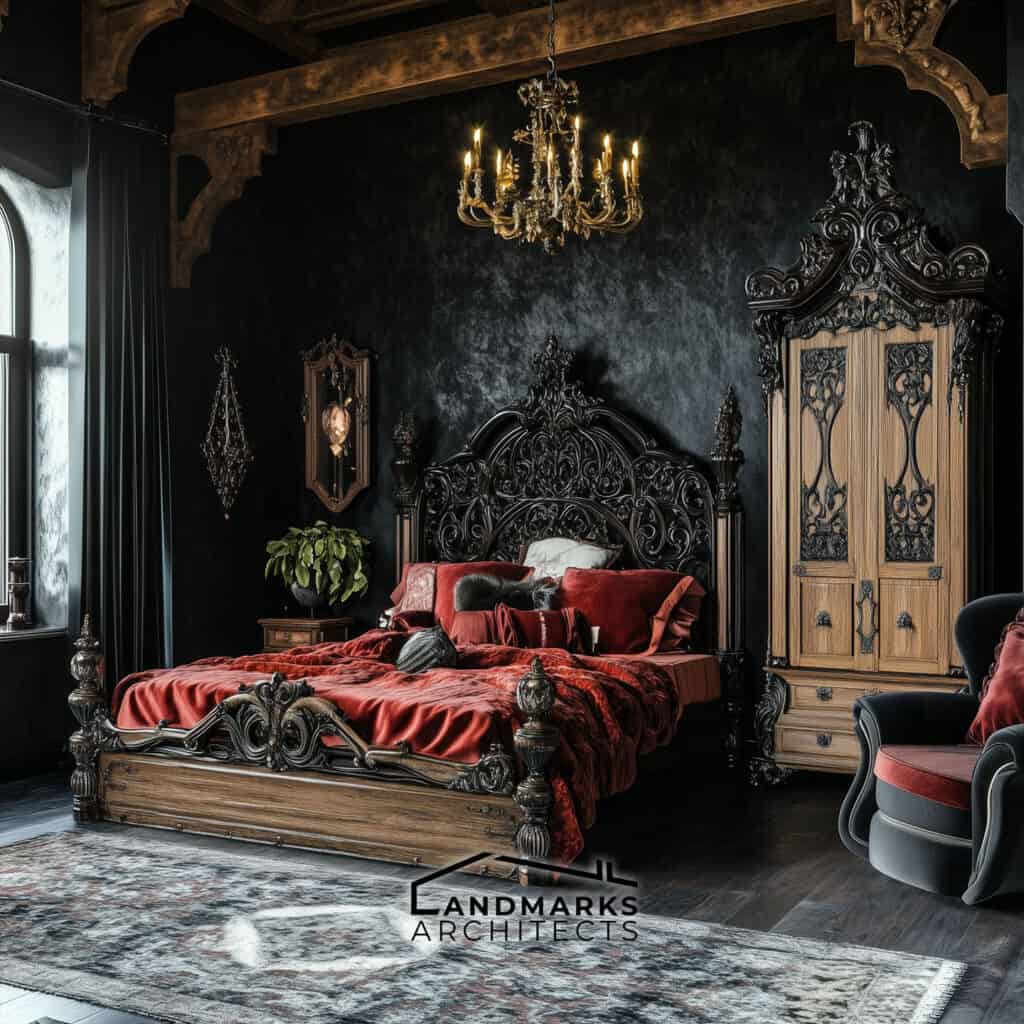
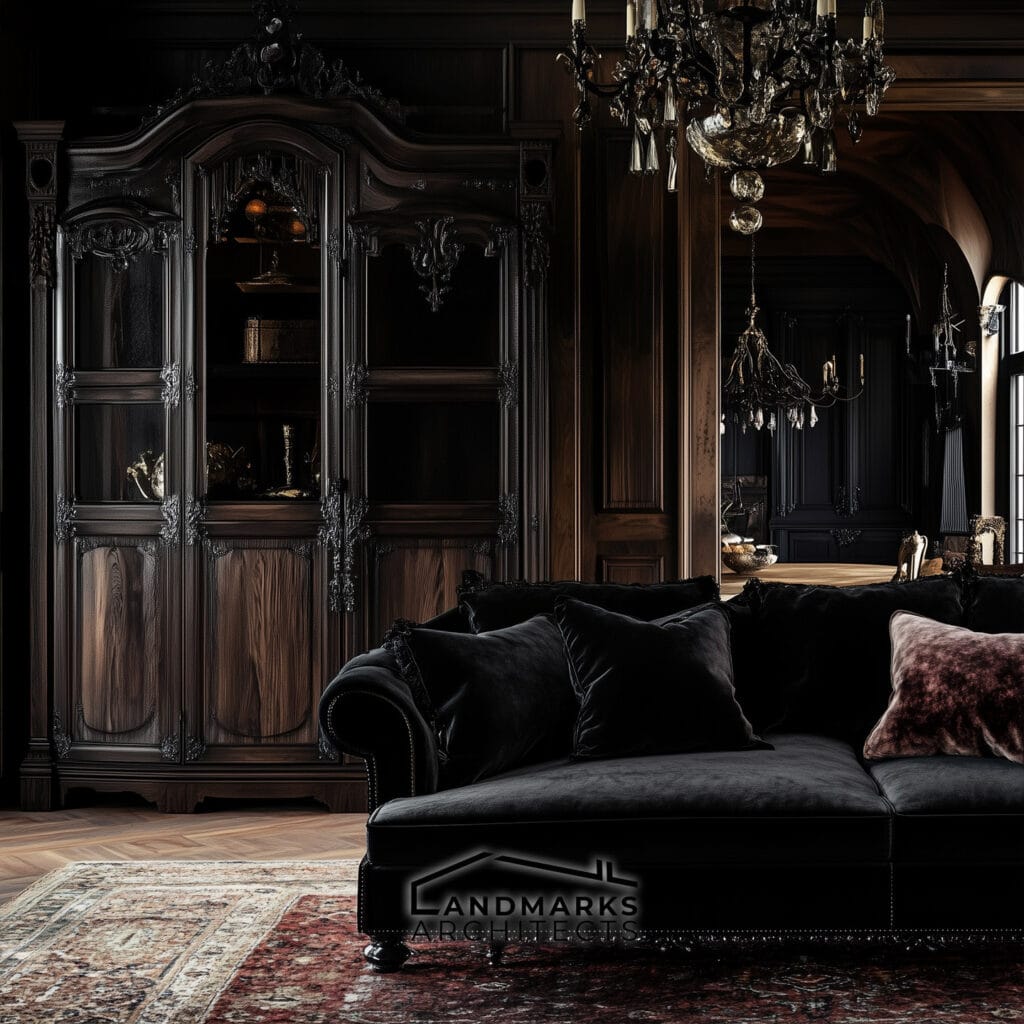
Gothic furniture is key to creating a dramatic and unique look. It often uses dark wood, detailed carvings, and rich fabrics. Here are some common pieces and their main features:
- Common Pieces:
- Carved Wood Bed Frames: Show detailed craftsmanship and give a room an antique feel.
- Velvet Sofas: Have deep colors and a soft texture, adding luxury to the space.
- Vintage Armoires: Provide storage and add decorative details that fit the Gothic style.
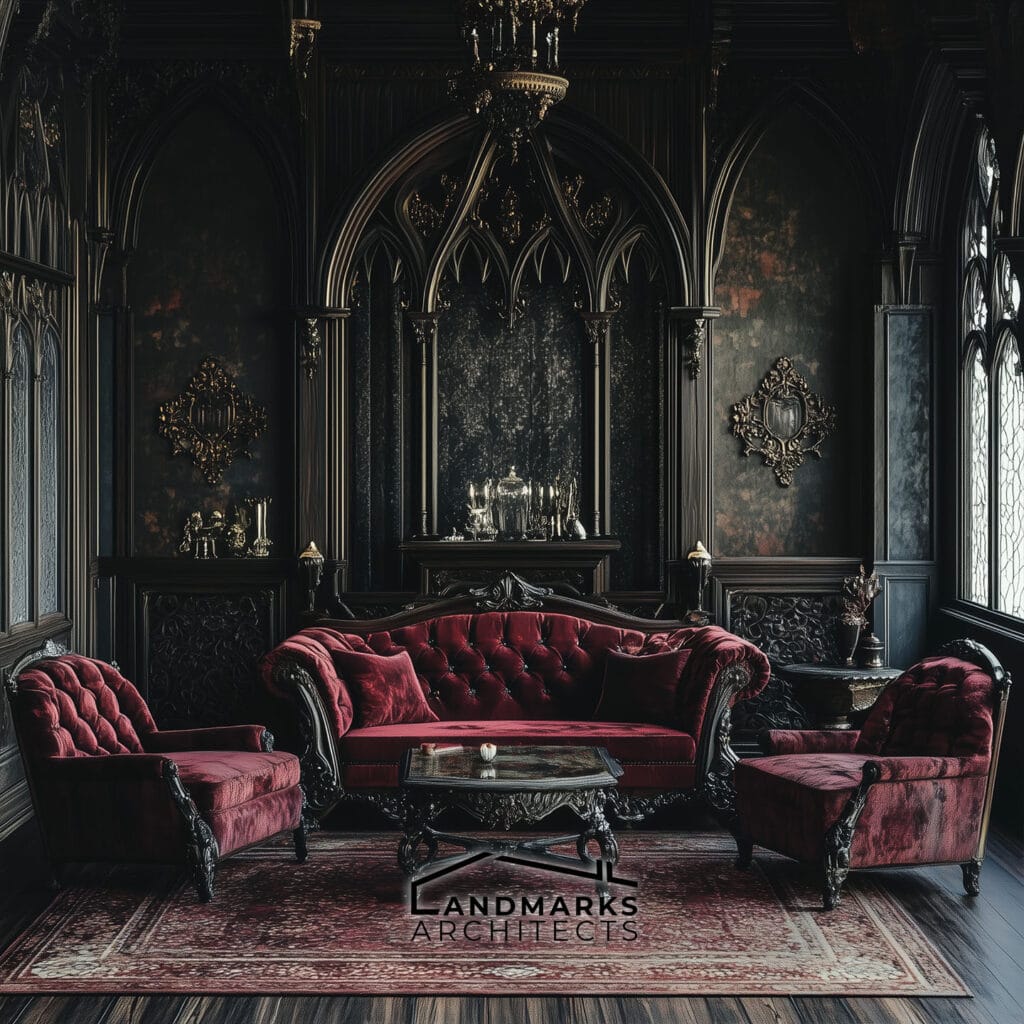
- Key Features of Gothic Furniture:
- Materials: Dark woods, velvet, and metals.
- Design: Detailed carvings and ornate patterns.
- Colors: Deep jewel tones, black, and rich hues.
These features help create a bold and inviting look in a Modern Gothic style home, shaping the Gothic interior design.
4. Gothic Fabrics
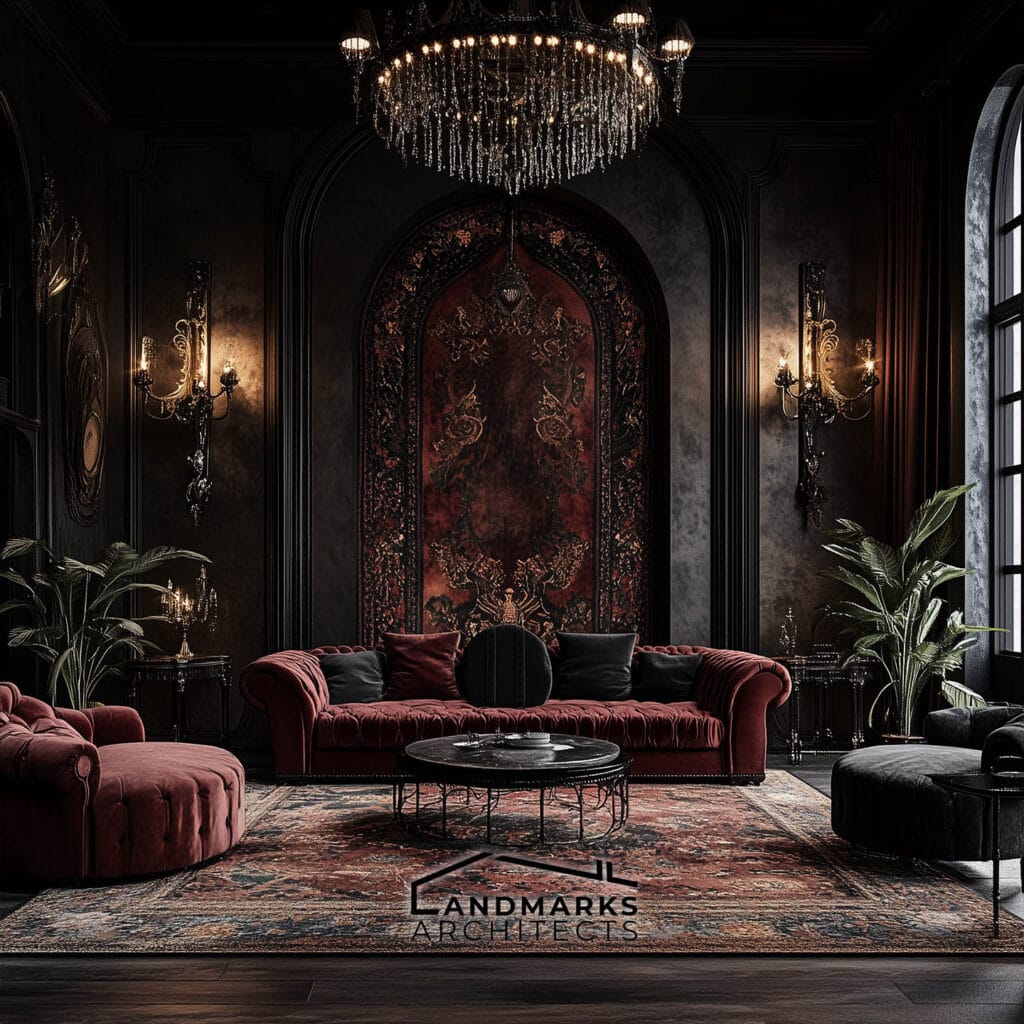
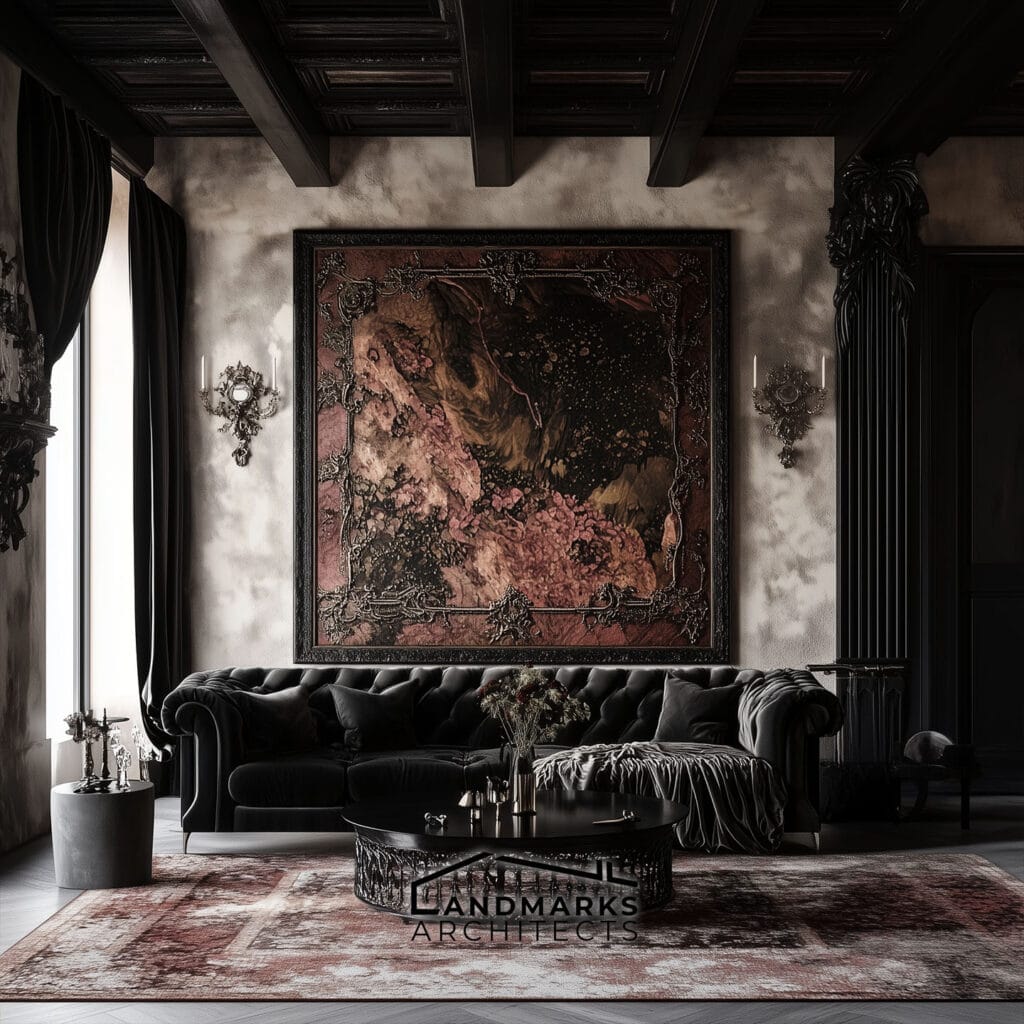
In Gothic interior design, fabrics are crucial for adding depth and richness. Textures play a key role in achieving the Gothic aesthetic. Here are some key fabric elements:
- Velvet sofas are popular choices in both traditional and modern Gothic styles. They provide a luxurious feel and complement the dark color palettes typical of Gothic.
- Draped Tapestries: These add visual interest with intricate patterns or scenes that reflect Gothic architecture. They enhance the atmospheric quality of the space in Gothic interior design.
- Textured Fabrics: Materials like brocade and silk are excellent options. They contribute to the luxury and richness of Gothic-inspired designs.
Incorporating various textures helps create an inviting atmosphere. Mixing different fabrics can elevate Gothic interior decor and Modern Gothic style, resulting in a stunning visual experience.
See Also How Do I Make My Interior Look Luxurious? 10 Essential Tips
5. Stained Glass in Gothic Design
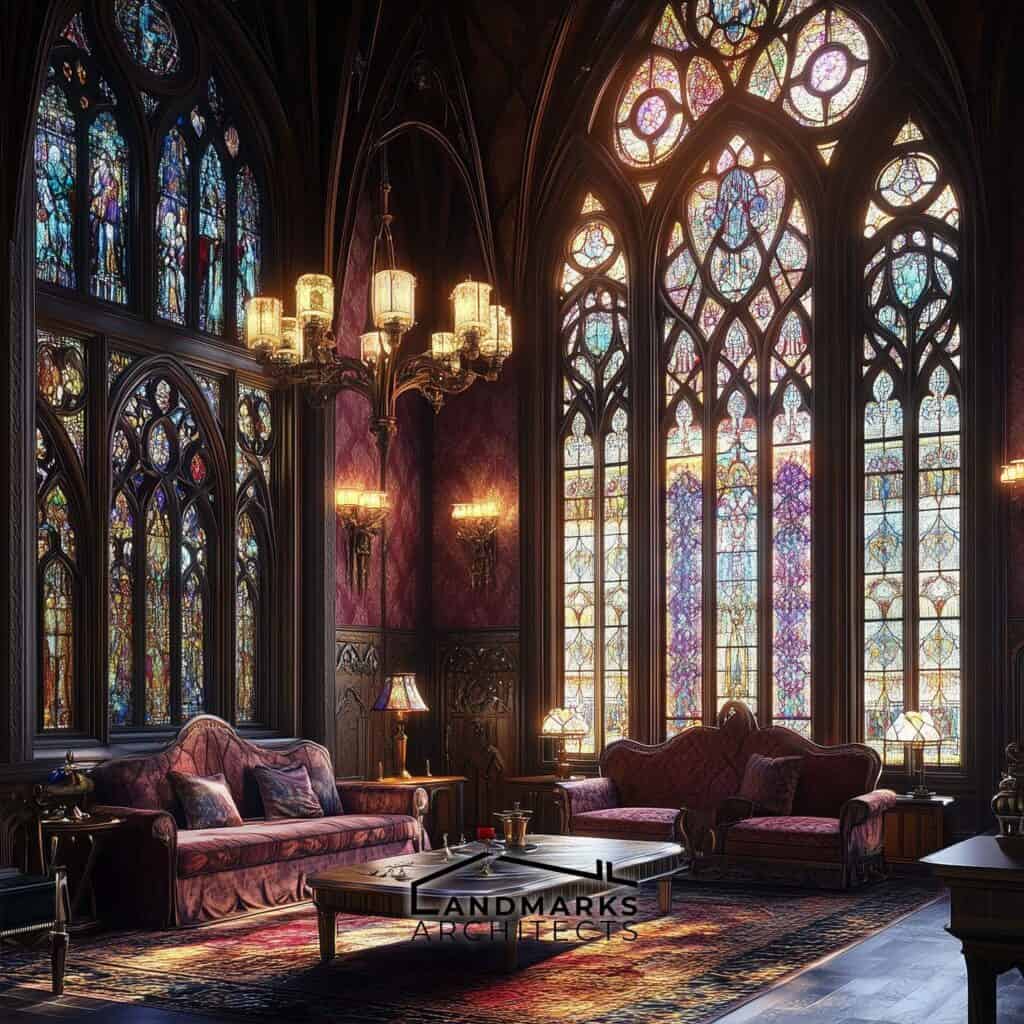
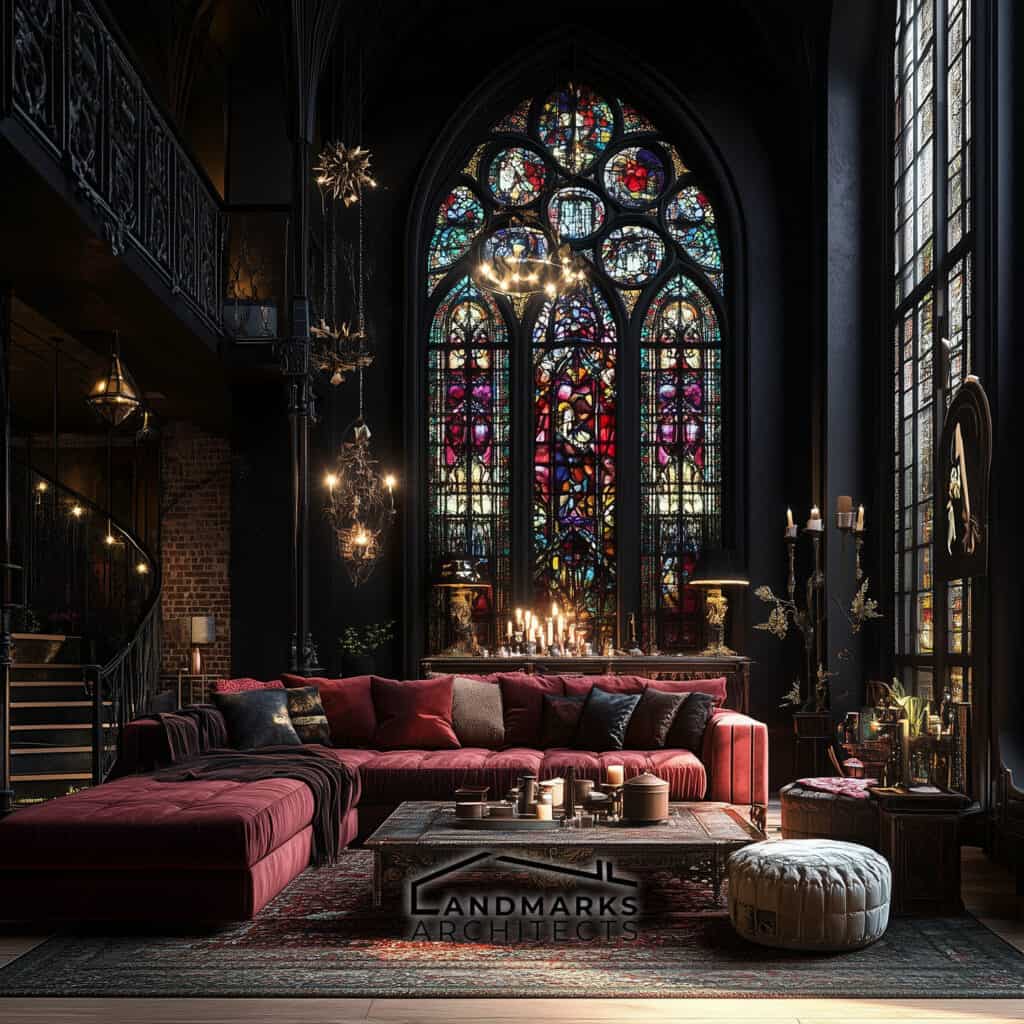
Stained glass is a key element in Gothic interior design. Here’s why it’s important:
- Intricate Patterns: Stained glass windows have detailed designs that fit the Gothic style. They often show religious scenes and symbols.
- Ambient Lighting: Stained glass lets light come through, creating beautiful and mystical lighting in the room. This adds to the atmosphere of the Modern Gothic style.
Stained glass helps connect traditional Gothic design with modern touches, keeping its rich history alive.
6. Wrought Iron Accents
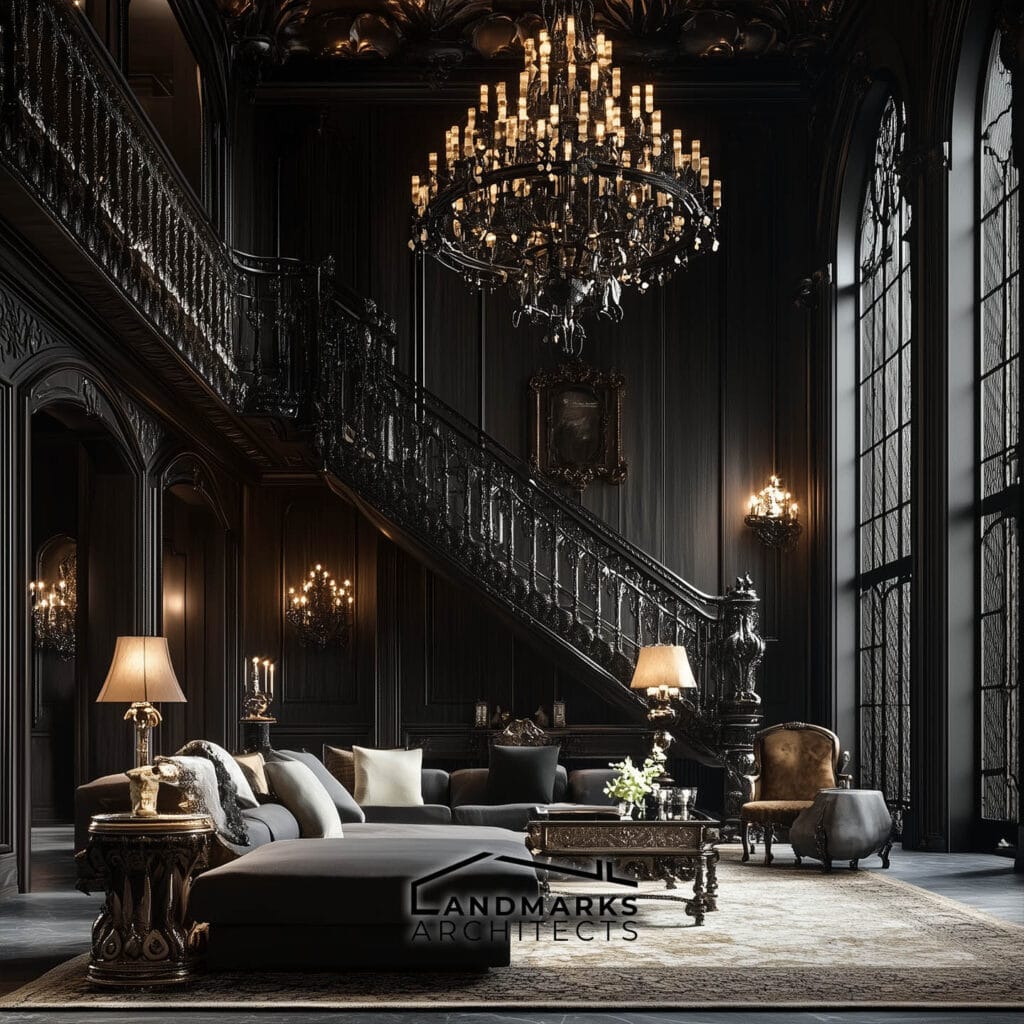
Wrought iron accents are important in Gothic interior design. They add a special touch that enhances the Gothic style. Here’s how:
- Ornate Chandeliers: Wrought iron light fixtures have detailed designs that add drama. They match well with other Gothic decor like dark wood and rich fabrics.
- Decorative Railings: Wrought iron railings add a Gothic touch to staircases and balconies, making them look elegant.
In Modern Gothic style, wrought iron can be used with sleek, modern pieces. This combination creates a fresh take on Gothic design. These accents help achieve an authentic Gothic look and show the craftsmanship of Gothic interiors.
7. Gothic Art and Sculptures
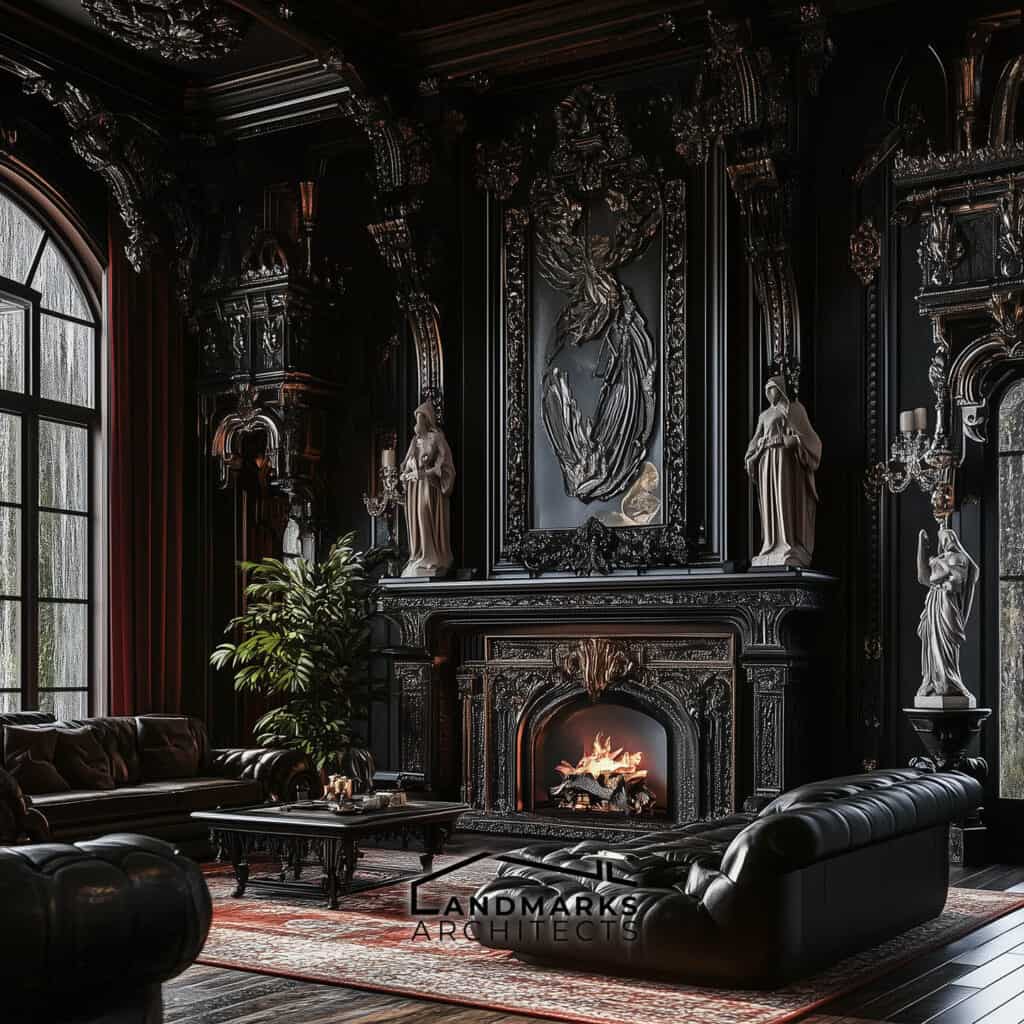
Gothic art is known for its detailed and vertical designs. It was popular in the medieval period and goes well with Gothic architecture. Here are the main features:
- Ornate Details: Gothic art has fancy designs and decorations, adding richness.
- Sculptural Elements: Statues of saints and biblical figures often decorate Gothic buildings, creating a dramatic look.
- Wood Carvings: Detailed wood carvings are common in furniture and architecture, adding to the Gothic style.
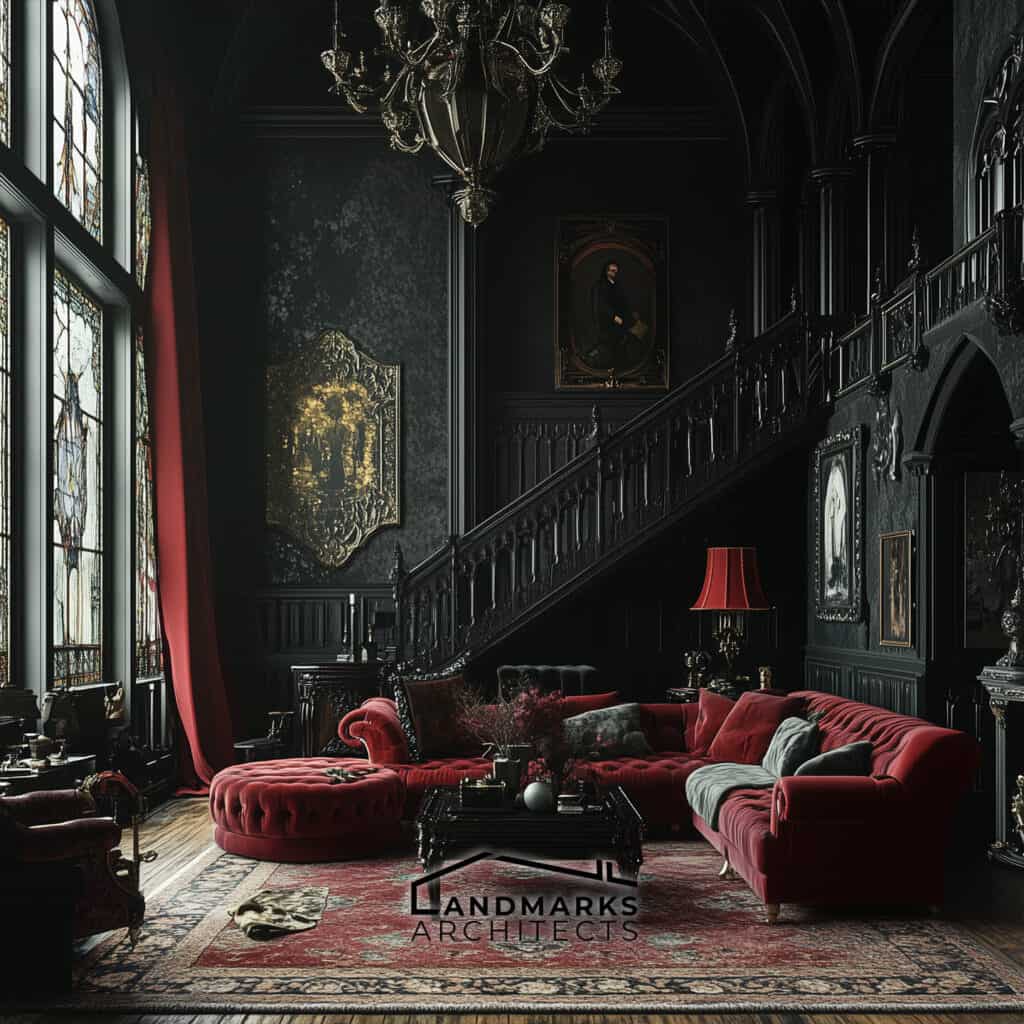
In Victorian Gothic style, these elements are used in interior design, mixing old styles with modern looks. This is also seen in Modern Gothic decor, where traditional Gothic art meets contemporary design.
You can also see this blend in Modern Victorian Architecture, which combines classic and modern elements.
Gothic art is not just for decoration; it tells stories through its visuals. Each piece helps create the dramatic and enchanting feel of Gothic interiors, making the space unique and captivating.
8. Flooring and Rugs
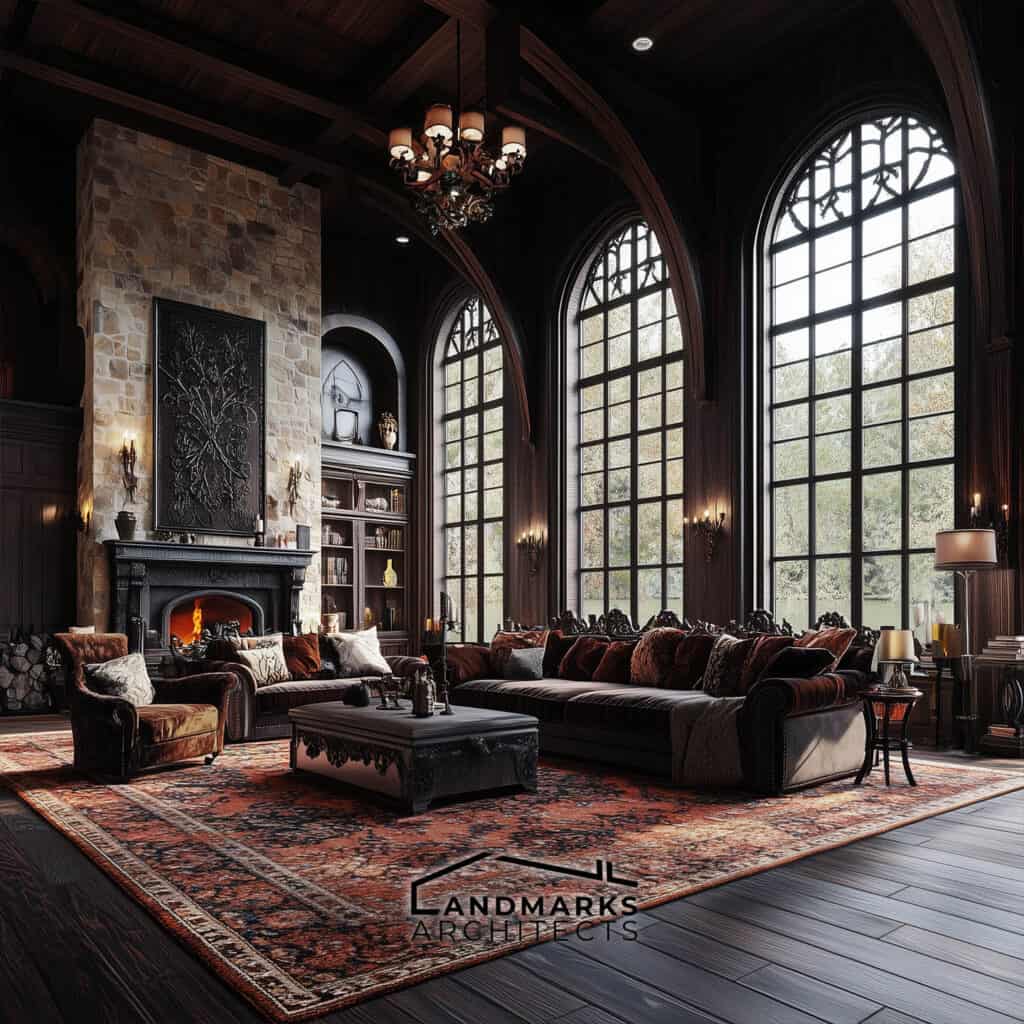
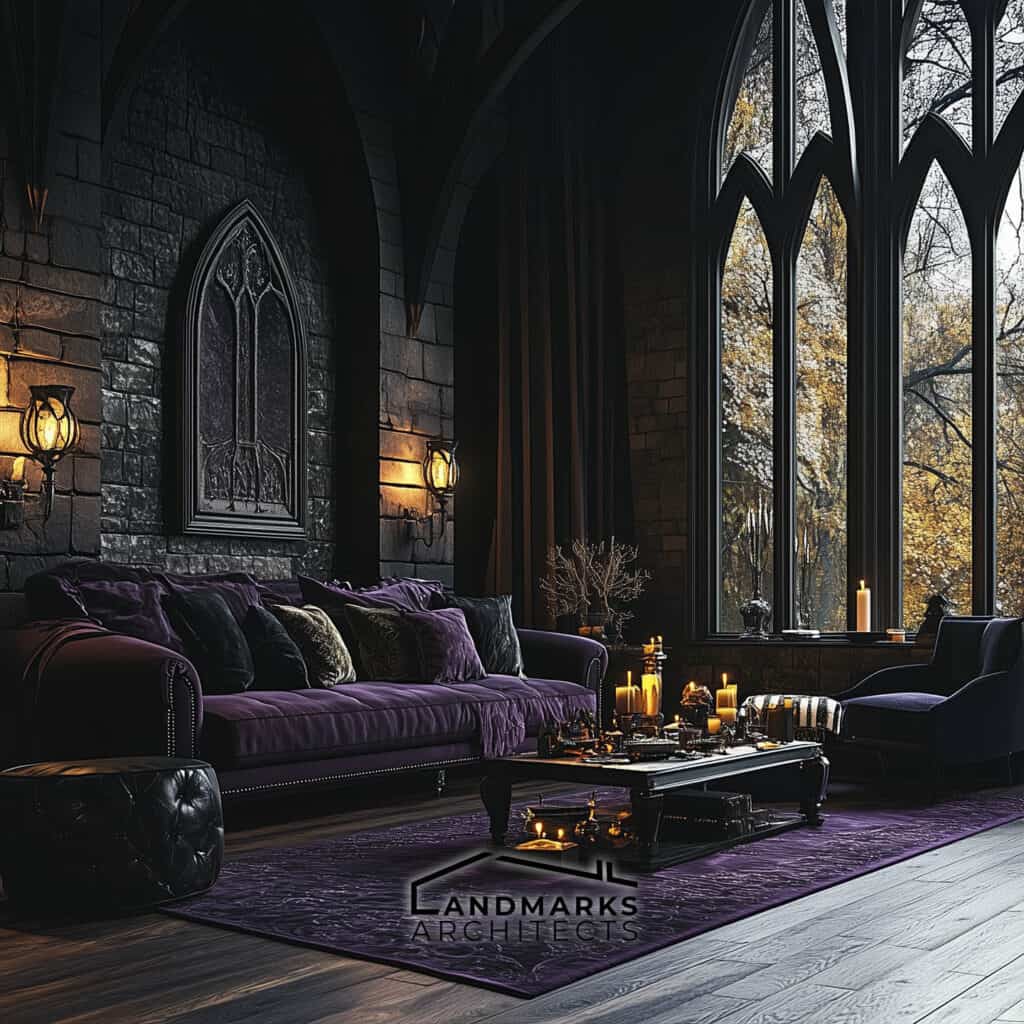
Flooring is key in Gothic interior design. It sets the base and enhances the Gothic style. Here’s how:
- Dark Wood Floors: Woods like oak or walnut add warmth and depth. They match the moody Gothic look.
- Stone Flooring: Slate or dark tiles give the feel of Gothic architecture. They add texture and make the room look old.
- Richly Colored Rugs: Rugs in deep colors like reds, blacks, and purples add comfort and style. They often have detailed patterns like floral or damask. Materials like velvet are soft, wool is warm and durable, and brocade has fancy designs.
Picking the right flooring and rugs helps create a cohesive Gothic look. These elements are important for the overall feel and atmosphere of Modern Gothic decor and Gothic interior design.
See Also What Are the 5 Essential Elements of Gothic Architecture?
Gothic Interior Design: A Recap
Gothic interior design mixes old-world elegance with modern flair. It features pointed arches, ribbed vaults, and detailed stone carvings for a dramatic look. Use deep colors, rich fabrics, and elements like stained glass and wrought iron to add Gothic charm.
By combining these elements, you create a space that feels both classic and stylish.









